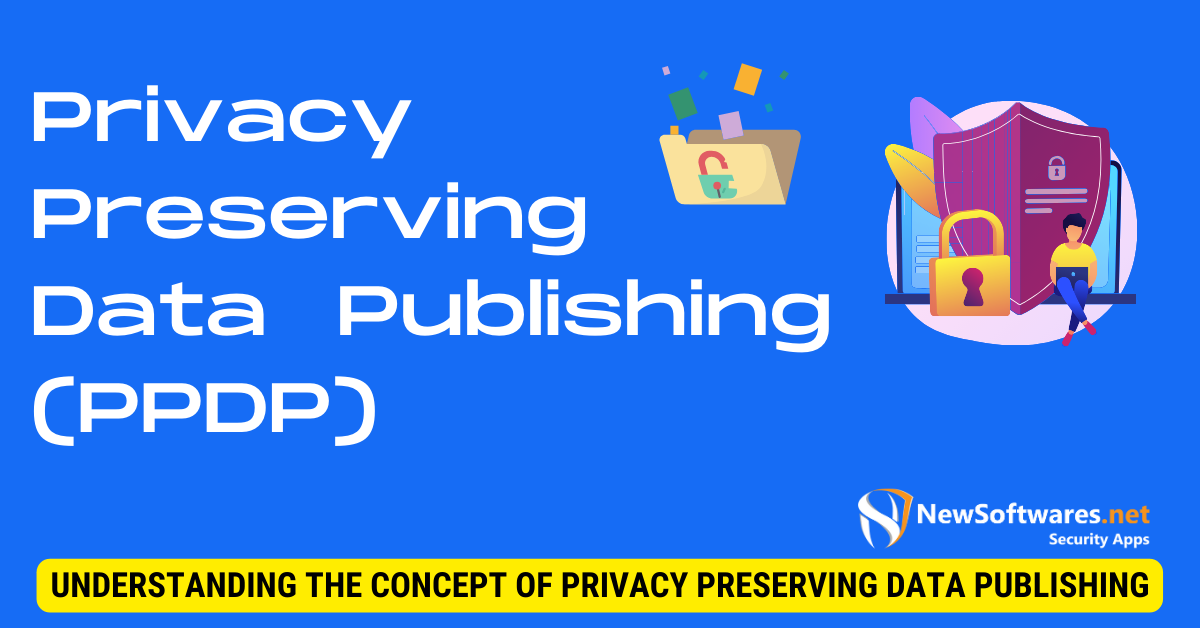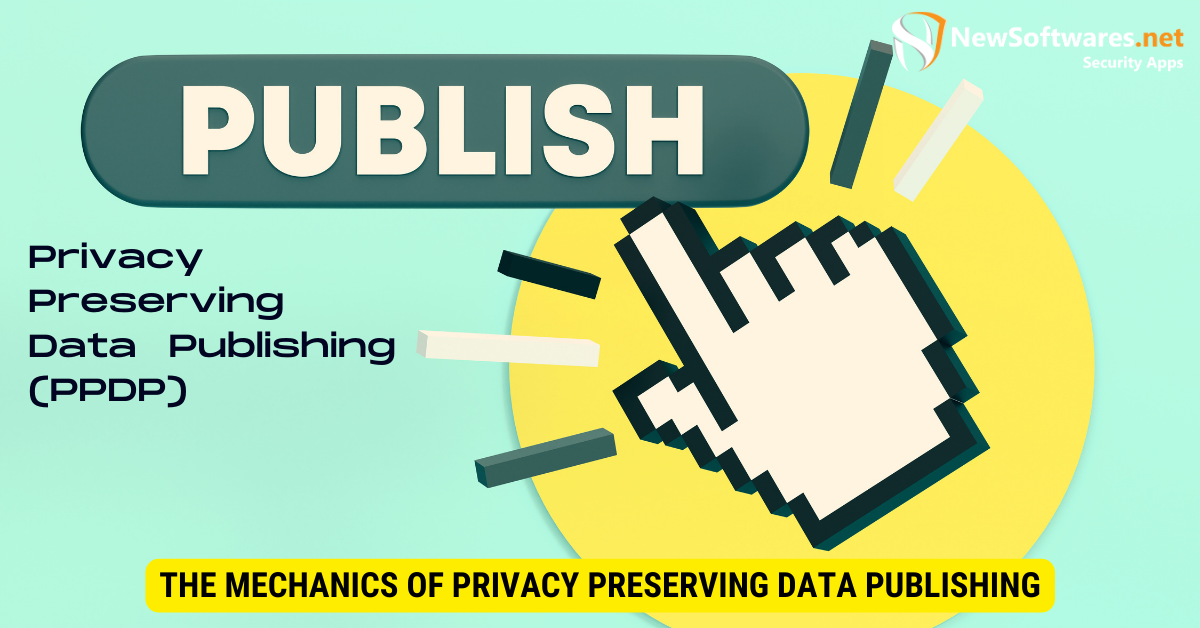PPDP is a method to publish data while preserving individual data privacy.
Privacy-Preserving Data Publishing (PPDP) is a concept that aims to make data publicly available while ensuring the protection of individuals’ sensitive information. It is a process that allows data to be shared with limited access to personal details, maintaining privacy and confidentiality.
Understanding the Concept of Privacy Preserving Data Publishing

In today’s digital age, data is a valuable asset. However, the need for privacy and data protection has become increasingly important. PPDP is a method that addresses this concern by balancing the need for data accessibility with the protection of individual privacy rights.
The Importance of Privacy in Data Publishing
Privacy is a fundamental right that individuals have to control their personal information. Maintaining privacy is crucial in data publishing to prevent unauthorized access, misuse, or identity theft. By utilizing PPDP techniques, organizations can ensure that sensitive data remains protected while still being accessible for analysis and decision-making.
Privacy breaches can have severe consequences for individuals and organizations alike. Unauthorized access to personal information can lead to financial loss, reputation damage, and legal implications. Therefore, it is essential to implement robust privacy measures when publishing data.
PPDP plays a vital role in safeguarding privacy in data publishing. It employs various techniques to anonymize data, making it difficult to identify individuals. Through data anonymization, personal identifiers such as names, addresses, and social security numbers are removed or replaced with pseudonyms. This process ensures that the individuals’ identities remain protected even if unauthorized parties access the dataset.
Key Principles of PPDP
PPDP operates on several principles. Firstly, it emphasizes the need for data anonymization. This process removes personally identifiable information, ensuring the privacy of individuals. Anonymization techniques include generalization, where data is grouped into broader categories, and suppression, where specific data points are removed entirely. By implementing these techniques, organizations can minimize the risk of re-identification.
Secondly, PPDP implements techniques that prevent the re-identification of individuals even if the dataset is combined or linked. This is achieved through methods such as k-anonymity and l-diversity. K-anonymity ensures that each individual in the dataset is indistinguishable from at least k-1 other individuals, making it difficult to identify a specific person. L-diversity, conversely, ensures that sensitive attributes within a group of k-anonymous individuals are diverse enough to protect against attribute disclosure attacks.
Lastly, PPDP follows the principle of minimal information disclosure, where only necessary and relevant data is shared, minimizing the risk of privacy breaches. By limiting the amount of information disclosed, organizations can balance data accessibility and privacy protection. This principle ensures that individuals’ privacy rights are respected while allowing for meaningful analysis and decision-making.
Overall, PPDP is a crucial method for protecting privacy in data publishing. By adhering to the key principles of data anonymization, prevention of re-identification, and minimal information disclosure, organizations can maintain the privacy of individuals while still harnessing the power of data for various purposes.
The Mechanics of Privacy Preserving Data Publishing

Privacy-Preserving Data Publishing (PPDP) is a complex process that combines various methods and technologies to safeguard privacy while enabling data sharing. Understanding how PPDP works and the role of algorithms in this process is essential for protecting sensitive information.
PPDP involves several steps carefully designed to balance the need for data utility and privacy preservation. The first step in the PPDP process is transforming and anonymizing sensitive data. This is achieved by applying advanced generalization, suppression, or perturbation techniques. Generalization involves replacing specific values with more generalized ones, while suppression altogether removes certain attributes or records. Perturbation, conversely, introduces controlled noise or randomization to the data, making it harder to identify individuals.
By applying these anonymization techniques, PPDP ensures that the data remains useful for analysis and decision-making while protecting sensitive information. The transformed and anonymized data is ready to be published and accessible to authorized users.
Authorized users play a crucial role in the PPDP process, as they are granted access to the anonymized data for analysis and research purposes. These users can perform various operations on the data without compromising privacy. They can conduct statistical analyses, generate reports, or develop machine learning models while respecting the privacy constraints imposed by the anonymization techniques.
The Role of Algorithms in PPDP
Algorithms are the backbone of PPDP, which is responsible for implementing anonymization techniques and data transformation. Different algorithms, such as k-anonymity, l-diversity, and t-closeness, ensure data privacy and protect against possible attacks.
K-anonymity is a well-known concept in PPDP that ensures that each record in the anonymized dataset is indistinguishable from at least k-1 other records. This prevents the identification of individuals based on unique combinations of attributes. On the other hand, L-diversity focuses on protecting against attribute disclosure by ensuring that sensitive attributes have at least l distinct values within each equivalence class. T-closeness, another important algorithm, aims to prevent attribute disclosure by measuring the similarity between the distribution of sensitive attributes in the anonymized and original datasets.
These algorithms and many others are carefully designed and implemented to balance data utility and privacy preservation. They are continuously evolving to keep up with emerging privacy threats and to address the challenges posed by new data-sharing scenarios.
In conclusion, PPDP is a complex process involving transforming, anonymizing, and publishing sensitive data while ensuring privacy protection. Algorithms are crucial in implementing anonymization techniques and protecting against privacy attacks. By understanding the mechanics of PPDP and the role of algorithms, organizations and researchers can effectively share data while maintaining the privacy of individuals.
The Benefits and Challenges of PPDP
While PPDP (Privacy-Preserving Data Publishing) has numerous advantages, it also poses challenges that must be addressed. Understanding both the benefits and limitations of PPDP is essential for organizations considering its implementation.
PPDP is a data-sharing approach that prioritizes privacy while allowing organizations to leverage the value of their data. By adopting PPDP techniques, organizations can ensure compliance with privacy regulations and ethical considerations, safeguarding the sensitive information they possess.
Advantages of Using PPDP
One of the key advantages of PPDP is that it allows organizations to share data while complying with privacy regulations and ethical considerations. By preserving privacy, organizations can build trust with customers and business partners, leading to stronger relationships and collaboration.
Moreover, PPDP enables sensitive data analysis without compromising individual privacy rights. This can aid in decision-making, research, and innovation across various industries. For example, in healthcare, PPDP techniques can facilitate the analysis of medical records while protecting patient confidentiality. This allows researchers to uncover valuable insights that can contribute to developing new treatments and improved healthcare practices.
In the financial sector, PPDP can be particularly beneficial. Banks and financial institutions can utilize PPDP techniques to share aggregated transaction data with regulatory authorities for compliance. This ensures that privacy is maintained while allowing authorities to monitor and detect fraudulent activities effectively.
Potential Drawbacks and Limitations
Despite its benefits, PPDP faces certain limitations. Anonymization techniques may result in a loss of data accuracy and utility. This can impact the usability of the data for certain applications. Organizations must carefully consider the trade-off between privacy protection and data quality when implementing PPDP.
Additionally, ensuring complete privacy protection is challenging as new privacy attacks and vulnerabilities emerge. Organizations undertaking PPDP must continuously adapt and enhance their privacy safeguards. This includes staying up-to-date with the latest privacy-preserving algorithms and techniques and conducting regular audits to identify and address potential vulnerabilities.
Furthermore, implementing PPDP requires a significant investment in resources, including skilled personnel and advanced technologies. Organizations must allocate sufficient time and budget to ensure the successful implementation and maintenance of PPDP practices.
In conclusion, PPDP offers significant benefits regarding privacy preservation and data sharing. However, organizations must be aware of its implementation’s potential limitations and challenges. By carefully considering these factors and implementing appropriate safeguards, organizations can leverage the power of PPDP while maintaining the trust and privacy of their stakeholders.
PPDP in Different Industries
The application of PPDP is not limited to a specific industry. Its principles can be implemented in various sectors, including healthcare and finance, to protect sensitive data while allowing for analysis and collaboration.
PPDP in Healthcare

In the healthcare industry, preserving patient privacy is critical. PPDP techniques can be employed to anonymize medical records, enabling research and analysis without disclosing personal details. This allows healthcare providers and researchers to gain valuable insights while maintaining patient confidentiality.
PPDP in Finance
Financial institutions deal with vast amounts of sensitive customer data. Implementing PPDP ensures that this data can be shared securely, facilitating analysis and decision-making without violating privacy regulations. Financial institutions can foster trust and ensure compliance with data protection laws by protecting customer information.
Future Trends in Privacy-Preserving Data Publishing
The field of PPDP is continually evolving, with new technologies and techniques emerging to enhance privacy protection and data sharing.
Emerging Technologies in PPDP
Advancements in cryptography, machine learning, and privacy-preserving algorithms are shaping the future of PPDP. Homomorphic encryption, differential privacy, and federated learning are just a few examples of technologies being explored to enhance privacy protection in data publishing further.
The Future of Data Privacy
As privacy concerns continue to grow, data privacy regulations are expected to become more stringent. Organizations must prioritize privacy-preserving methods like PPDP to stay compliant and build customer trust. The future of data privacy lies in striking a balance between accessibility and protection, allowing data to be shared for beneficial purposes while safeguarding individual privacy rights.
Key Takeaways
- PPDP aims to share useful data without exposing sensitive personal information.
- It employs various algorithms and techniques to mask or obfuscate individual data points.
- PPDP balances data utility and privacy.
- Used in domains with sensitive information like healthcare and finance.
- Increases the trust of individuals when sharing their data.
FAQs
What does PPDP stand for?
Privacy Preserving Data Publishing.
Why is PPDP important?
It ensures that data can be published and used without compromising individual privacy.
What industries benefit from PPDP?
Industries like healthcare, finance, and any sector with sensitive personal information.
Is PPDP 100% secure?
While PPDP greatly enhances privacy, no system is 100% secure. Proper implementation and continuous updating are crucial.
Can data be used normally after PPDP?
Yes, PPDP aims to preserve data utility while ensuring privacy.
Conclusion
In conclusion, Privacy Preserving Data Publishing (PPDP) is necessary in today’s data-driven world. Organizations can make informed decisions about data sharing and protection by understanding the concepts, mechanics, benefits, and challenges of PPDP. With its application across various industries and the continual advancements in privacy-preserving technologies, PPDP is set to play a crucial role in the future of data privacy.
